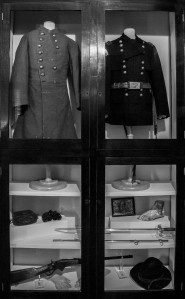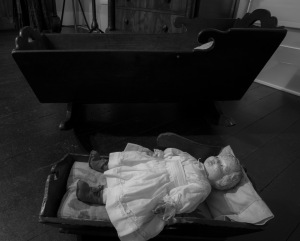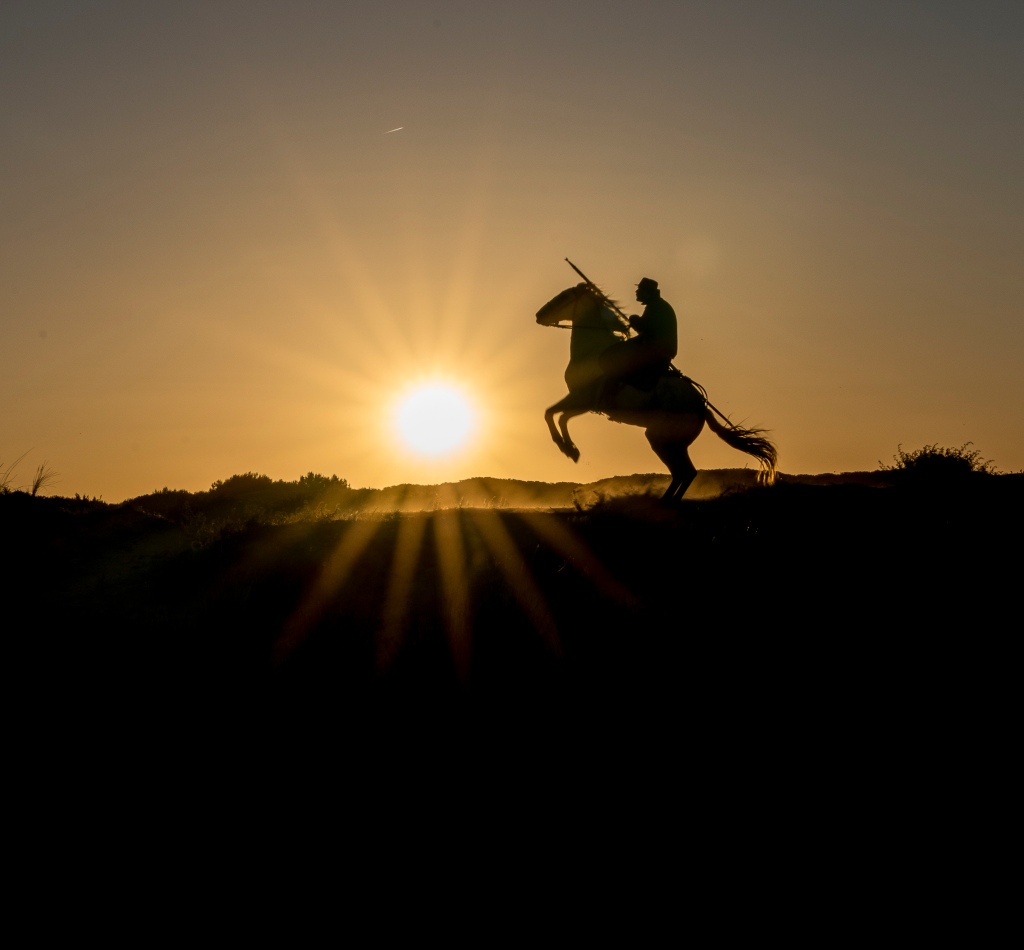Seeing Gardens in San Miguel
March 12, 2018
Highlights of Sam Abell’s master class in San Miguel de Allende, Mexico: Seeing Gardens. (My images are at 3:59)
Contact:
Marjorie Kaufman
The Hilltop Cares Foundation
(646) 637-2964
info@hilltopcares.org
FOR IMMEDIATE RELEASE May 1, 2016
HORACE MANN ALUMNI MUSICIANS TO PERFORM FOR HILLTOP CARES
Benefit Concert Brings School Community Together to Support Abuse Survivors
MAY 1 2016, BRONX, NY: The Hilltop Cares Foundation is pleased to announce that on Saturday May 14th, Broadway conductor and Tony award winner Ted Sperling, Grammy award nominated pianist Claudia Knafo, acclaimed jazz musician Jon Seiger, and other Horace Mann alumni will perform at the Fisher Recital Hall on the Horace Mann campus as part of a benefit concert for survivors of abuse at the school.
Proceeds from the concert will support The Hilltop Cares Foundation, a 501(c)3 charitable organization which assists alumni survivors and their families who are in need of therapeutic treatment. The concert is being held in memory of 1982 Horace Mann alumnus Dominic Kulik who passed away earlier this year. Kulik’s classmate, writer Amos Kamil, author of the 2015 book Great Is the Truth covering the history of abuse at Horace Mann, will share reminiscences of Dominic with the assembled guests, who are expected to include alumni, students, staff members and parents.
Marjorie Kaufman, Chair of the Hilltop Cares board, said the concert will be “an incredibly powerful and emotional evening of music and camaraderie in support of a great cause: helping fellow alumni in need and letting them know they are not alone.” Kaufman is a 1978 graduate of Horace Mann as well as the parent of two boys currently at the school.
Pianist Claudia Knafo, who is credited with the idea of having alumni musicians perform in support of Hilltop Cares remarked “Bringing together exceptionally talented alumni to share their music on campus is a small step on the road to healing the Horace Mann community, which has been so profoundly affected by revelations of abuse.”
Daniel Miller, a lifelong friend of Dominic Kulik, member of the board of Hilltop Cares and current parent, said, “Dominic was an inspiration to us. He was a friendly, caring classmate and his work as a member of the Horace Mann Board of Trustees paved the way for constructive dialogue between a group of abuse survivors and the school.
The event, the second such undertaking for Hilltop Cares, will begin at 6:30 pm with cocktails and hors d’oeuvres sponsored by the school. Alumnus Cantor Gregg Luchs ’78, a board member of Hilltop Cares, will conduct a pre-concert spiritual service at 7:30 pm. The concert itself will begin at 8:00 pm and include performances by alumni Ted Sperling ‘79, Claudia Knafo ‘82 and Maryl Cannon ‘79 and remarks by Dominic Kulik’s classmates Amos Kamil and Daniel Miller. The event lineup includes two survivors of abuse: Steve Fife, Class of 1971, who will read selections from his poetry collection, “Twisted Hipster”, and Jon Seiger, Class of 1979, who will perform jazz numbers with his band, The All Stars. The concert will conclude with a reunion of the Horace Mann Jazz Band from the late 1970’s, featuring Jon Seiger, David Kahn ’77, Dr. David Silbersweig ’78 and Dr. Steve Odrich ’80.
Tickets beginning at $10 for students are available at the Hilltop Cares website, www.hilltopcares.org.
About The Hilltop Cares Foundation: Hilltop Cares was formed by Joe Rose, a 1977 graduate, and other Horace Mann alumni to help survivors of abuse at the school and to promote healing. Led by Marjorie Kaufman, a 1978 graduate and parent of two children currently at the school, Hilltop Cares funds therapy for survivors and their families who are in need of assistance, provides resources on sexual abuse of children through its website, www.hilltopcares.org, and seeks to bring together the Horace Mann community in a spirit of healing.
###
NY Mag: Hedge-Funder Bill Ackman Is a Star at Tribeca Film Festival, Even As He’s Losing Billions By Michelle Celarier
April 12, 2016
Hedge-Funder Bill Ackman Is a Star at Tribeca Film Festival, Even As He’s Losing Billions
In one of the more surreal events in Bill Ackman’s now almost four-year battle to take down diet-shake seller Herbalife, the New York billionaire found himself in a weathered church in Chicago’s South Side on a bitter January night in 2015.
As the snow fell outside, the hedge-fund titan worked the pews, shaking hands and listening to tales of woe, then stood in front of the sanctuary’s stained-glass windows, where he gave nothing short of a sermon on why Herbalife was a pyramid scheme that was, as he put it, “stealing the American Dream” from new Latino immigrants, who make up the bulk of Herbalife’s U.S. ranks. A spontaneous chant, “Ackman amigo,” sprang from the largely Hispanic crowd.
As the improbable night unfolded, award-winning filmmaker Ted Braun (of Darfur Now fame) was shooting it all — part of a nearly three-year effort that is coming to fruition in Betting on Zero, a documentary about Ackman’s much-debated Herbalife short bet that will have its premiere at the Tribeca Film Festival Thursday.
A wider public lens on the drama could help push regulators to take action on Herbalife, which has been under investigation by the Federal Trade Commission for more than two years. In addition to filming Ackman, director Braun spent months following grassroots activist Julie Contreras, a fierce opponent of Herbalife who invited the hedge-fund manager to speak at the Chicago church and has helped dozens of former sales representatives, called “distributors” or “members” — some of whom appear in the documentary — file complaints with the FTC.
But it’s the six-foot-three, green-eyed, silver-haired Ackman, a made-for-Hollywood hedge-fund legend if ever there was one, who is the main attraction. Whether he’s loved or hated, making money or losing it, Ackman, who turns 50 next month, arguably has more star power than any other money manager of our era. All five showings of Betting on Zero sold out 15 minutes after ticket sales opened.
Off-screen, however, Ackman is being pounded, not only on Herbalife, but also in his even-bigger bet on troubled drug company Valeant Pharmaceuticals. Both companies are facing multiple regulatory investigations over alleged improprieties, not to mention financial pressure. And the shares of both have done the opposite of what Ackman was betting they would do: Valeant has collapsed, while Herbalife is higher than when he announced his short position in 2012.
The two controversial positions helped turn last year into the worst ever for Ackman’s Pershing Square Capital Management. His largest fund was down 20 percent in 2015 and has fallen another 25 percent this year. But even some of Ackman’s harshest critics aren’t counting him out. Hedge-fund manager Robert Chapman of Chapman Capital in Los Angeles, who went up against Ackman on Herbalife in early 2013, has recently invested in both Valeant and Pershing Square Holdings, Ackman’s publicly traded hedge fund. “I don’t think Ackman is ‘done,’ just maimed,” Chapman said in an email. “That dude is RESILIENT!”
Indeed Ackman, has been taking body blows on his Herbalife effort for years. Armed with a mountain of research, he lobbied members of Congress to press the FTC to investigate Herbalife, which the regulator finally agreed to do in 2014 after Latino activists also took up the cause. Since then, Ackman has spent millions on his own investigation, which is continuing, and produced several slick videos, PowerPoint presentations, and two websites tracking his efforts to expose what he believes are Herbalife’s immoral and illegal pyramid practices. Herbalife, he says, preys on the most vulnerable, enticing them into a false business opportunity with promises of riches and health. In the end, the vast majority — about nine out of ten — lose money. The few who do profit, Ackman argues, make the bulk of their income recruiting others into the scheme, which is illegal.

For its part, Herbalife insists it is not a pyramid scheme and has long enjoyed support in Washington, largely from Republican pols like Orrin Hatch of Utah. Since Ackman came along, though, it has spent millions shoring up support on the other side of the aisle. Last year CEO Michael Johnson promised its top salespeople that the company would “seize the narrative,” after hiring Beltway Democrats to beat back Ackman, painting him as a manipulative Wall Street villain out to destroy a company helping solve the global obesity epidemic. (Hillary Clinton’s campaign also has ties to the Herbalife camp: Her surrogates Hilary Rosen and Madeleine Albright are advisers to the company.)
So far, despite the 1,200 alleged victims who have filed complaints with the FTC and other regulators, no action has been taken in the Herbalife matter. (One of them, Julio Ullio, who lost $50,000 and his marriage trying to make a go of it in his Herbalife business, also appears in the film.)
Ackman has hung on, at great financial cost, and remains adamant he will be vindicated. “We do not believe the FTC will deliver a ‘slap on the wrist’ in light of the enormous harm Herbalife inflicts on its victims, which will continue if it is not forced to stop its pyramidal practices,” he told investors in March.
In February, Herbalife said it was in “discussions” with the FTC and warned investors it might be sued by the regulator — which means the FTC could seek an injunction to shut it down, as it has with others. Even if Herbalife does ultimately reach a settlement with the FTC, the question is just how hard the regulator will come down on Herbalife’s controversial business practices. Last year, in a groundbreaking case, the FTC accused an Arizona multilevel marketing company called Vemma of being a pyramid scheme. While the case is winding through federal court, Vemma has been forced to set up a new compensation plan that ensures that most sales are to outside customers — to prove true retail demand instead of recruiting-based pyramid sales. Industry insiders and experts alike believe it is impossible for most MLMs (including Herbalife) to live by that standard.
For Herbalife, the scrutiny has already taken a toll: Net sales fell 10 percent last year, and the distributor ranks are in decline. “The pyramid has quit growing,” says Ackman. The stock has been a stomach-churning roller coaster, with shares still down 25 percent from a high of $81 before the FTC probe began, despite a 45 percent surge over the past 12 months.
The hedge-fund mogul’s jaw-dropping $1 billion short on Herbalife, a 11 percent position, seemed extraordinarily risky when it was unveiled in December of 2012. Short sellers betting on a stock’s decline borrow shares, hoping to pay them back at a lower price and pocket the difference. If the stock rises instead, theoretically the losses are unlimited. Yet taking a huge bet on high-flier Valeant, which once comprised 25 percent of Pershing Square, has proved a bigger black hole — and far more damaging to his reputation.
“We made a number of mistakes on Valeant,” Ackman admitted to investors on his April 6 quarterly call. “It has caused some soul searching.”
Ackman raised the ante for outlandish shareholder activist plays by hooking up with then–Valeant CEO Michael Pearson to press for a takeover of Botox-maker Allergan, where he took a 9 percent stake in the spring of 2014. While that deal fell through, Pershing Square made $2.2 billion on Allergan’s sale to rival drugmaker Actavis, giving his fund an astonishing 40 percent gain that year. Thinking more deals for the acquisitive Valeant were on the horizon, Ackman sold out and reinvested the proceeds in Valeant a year ago. No sooner had he done so than the drugmaker began to gain public notoriety for its hefty price increases on two heart drugs, exposed in The Wall Street Journal last spring, and later mentioned by Clinton as she lambasted the price gouging. (Ackman says he knew nothing about the price hikes until reading it in the newspaper.)
Valeant was already a target of short sellers wary of its acquisition-driven strategy and related accounting practices. Pearson insisted “organic growth” was driving profits. But some of that growth came through a new, secret relationship with captive specialty pharmacy Philidor. When its shady practices were exposed in October, the stock nose-dived, and Valeant ended the relationship.
Ackman was more than a billion dollars in the hole and stuck with the company, even buying more shares to amass a 9 percent stake. This year, however, things took another turn for the worse when Valeant said an internal investigation revealed a major accounting error. Shares are now down 80 percent.
The hedge-fund manager swung into action as his losses mushroomed. In March, he helped kick out Pearson, joined the board, and announced last week that hiring a new CEO could be only “weeks away.” The stock has gained a bit off recent lows. “We should be able to recover the lion’s share of our investment — if not all of it — over time,” he promised.
It has become a popular game on Wall Street to take the other side of Ackman’s bets — especially being long Herbalife and short Valeant — in what has been called a “Schadenfreude” trade. The Street’s denizens are merciless, and some who’ve been on the opposite side of Ackman’s many successes are publicly gloating over his losses and boldly hoping for his demise. “I still have it in for him with Pre Paid Legal,” short seller Marc Cohodes, whose Copper River hedge fund went bust in 2008, wrote in a Twitter exchange with another professed Ackman-hater recently. (Prepaid Legal was popular among short sellers when Ackman was long its stock — some 15 years ago.)
It is easy to go after him. While most hedge funds still shroud their activities and performance in secrecy, Ackman cannot. His holdings are all publicly traded stocks, and his returns have been publicly available ever since the 2014 IPO of Pershing Square Holdings.
Fortunately for Ackman, he has created a moat to protect himself: a fund structure where about half of Pershing Square’s capital is his own or was raised through the IPO, meaning it’s not going anywhere, and the bulk of the rest can only be withdrawn in quarterly intervals over two years. “That setup is brilliant,” says veteran hedge-fund marketing executive Marjorie Kaufman, who also says Ackman has created a “bond of trust” with his investors. Despite the huge losses recently, over the past 11 years he has earned them multiples of what the S&P 500 returned. So far this year, they have asked for only $240 million, or 2 percent, out of the firm’s $12 billion.
To keep investors happy, Ackman now needs to show substantial progress on Valeant. “There’s enormous upside to us if we can recover our value,” he says, knowing that if he succeeds in fixing the company, his stock will rise. On top of that, a movie that flashes the stories of Herbalife’s alleged victims on the big screen could be a godsend for him. Says activist Contreras: “It’s not just about the stock market. People need to see the human aspect.” She, like Ackman, is hoping the FTC is paying attention.
Le Courrier: Afro Cuban Dancers in Havana
March 7, 2016
Le Courrier published my image of Afro-Cuban dancers in Havana
Passeurs d’arts
«Les cultures ne sont jamais des cellules imperméables: elles se construisent de manière constante, explique Federica Tamarozzi, conservatrice Europe au Musée d’ethnographie de Genève. Certains folkloristes, considérés comme les premiers ethnologues, étaient partis à la recherche de traditions suffisamment isolées pour ne pas avoir été influencées par d’autres cultures. Or ils se sont rendus compte qu’aucune culture n’est ‘pure’.»
MASQUES HARD ROCK
Conservateur-adjoint au Musée d’ethnographie de Neuchâtel, Grégoire Mayor abonde, constatant par ailleurs que «certaines populations continuent à mettre en avant le caractère unique de leur artisanat local, parce que c’est valorisant.» On peut entendre ce type de discours autour des masques du Lötschental, en Valais. «Derrière leur ‘authenticité’ de façade, on trouve de nombreuses influences extérieures. Dans les années 1970, l’ethnologue Suzanne Chappaz a constaté qu’un sculpteur avait affiché comme source d’inspiration des reproductions d’œuvres de Jérôme Bosch. Plus récemment, des artisans ont puisé des motifs sur internet: durant une période, l’esthétique du cinéma fantastique ou celle du hard rock ont fortement influencé la production de masques de la vallée.»
Les échanges ont été facilités il y a fort longtemps par les empires et leurs voies de circulation, faisant de ces communautés politiques des plaques tournantes pour les savoirs, à l’image de ce qui s’est passé durant le règne d’Alexandre le Grand (Ve siècle av. J.-C.). L’absence d’artères dignes de ce nom n’avait toutefois pas empêché l’Homo erectus de sortir d’Afrique il y a un million d’années déjà. Plus proche de nous temporellement, l’Homo sapiens aurait pour sa part colonisé le continent africain il y a 150 000 ans, pour se répandre ensuite à travers l’Eurasie, jusqu’en Océanie. Combien étaient-ils, nos ancêtres migrants? Impossible à dire. Aujourd’hui, les flux migratoires incluraient quelque 230 millions de personnes.
«De tout temps, le fait d’être ouvert à la culture des autres s’est avéré être un plus», insiste Jacques Berchtold, professeur de littérature et directeur de la Fondation Martin Bodmer, à Cologny. Il rappelle que «le meilleur du théâtre classique romain a été influencé par les érudits de culture grecque.» Quant au poète latin Virgile, il s’est fortement inspiré des Hellènes. Aujourd’hui, en France, ce sont par exemple des écrivains d’origine antillaise, maghrébine ou – plus généralement – africaine qui proposent un renouvellement de la langue de Molière. Alors que pendant longtemps, c’est l’Hexagone qui influençait ses colonies d’un point de vue littéraire, ne serait-ce qu’en imposant la langue française. Ou en faisant dire «nos ancêtres les Gaulois» aux populations des territoires d’outre-mer!
Spécialiste de Rousseau, Jacques Berchtold pointe aussi les nombreux écrivains qui ont écrit dans une autre langue que la leur, au siècle dernier, pour cause d’exil ou de simple déménagement: «Venant d’ailleurs, ces écrivains se sont montré particulièrement enthousiastes à embrasser la nouvelle culture, alors que ceux qui la vivent au quotidien ont parfois une attitude un peu mollassonne.» Ce faisant, les nouveaux venus ont contribué à enrichir les langues d’accueil. Jacques Berchtold cite l’Irlandais Samuel Beckett, qui a rédigé en français ses œuvres théâtrales les plus connues, à commencer par En attendant Godot (1948-1949). Quant à Vladimir Nabokov, c’est en anglais qu’il a écrit Lolita (1955). Enfin, l’Autrichien Rainer Maria Rilke a choisi le village de Veyras (VS) pour composer en français «parmi les plus beaux poèmes valaisans».
FIGEE, LA MUSIQUE MEURT
Le métissage peut être envisagé comme un «processus dynamique, né de l’interaction entre personnes ou groupes qui n’étaient pas supposés se rencontrer», formule Madeleine Leclair au sujet de la musique. Conservatrice du département d’ethnomusicologie du Musée d’ethnographie de Genève, elle observe qu’«il en découle un processus de transformation. Aussi aucune culture musicale traditionnelle n’est-elle exempte de l’influences de ses voisins, aucune n’a évolué dans le temps sans se modifier. Si elles restent figées, elles meurent.»
Pour cette Française d’origine canadienne, les exemples les plus parlants sont à chercher du côté de l’Amérique latine, où se sont rencontrées les traditions amérindiennes, européennes et africaines. Rumba et boléro (Cuba), calypso (Venezuela), samba (Brésil), cumbia (Colombie) ou tango (Argentine): toutes ces musiques sont le syncrétisme de leurs origines diverses. Madeleine Leclair ajoute que si ces métissages ont de tout temps existé, ils se sont bien entendu multipliés au cours du XXe siècle, avec la radio, la télévision, puis internet.
NOUVELLE DONNE
Plus généralement, Federica Tamarozzi souligne les influences, très courantes en Europe, entre culture savante et culture populaire. Difficile d’ailleurs
d’établir une dichotomie nette: «Est-ce que ce sont les arts culinaires de la cour de France qui ont influencé la cuisine populaire, ou l’inverse? Les échanges sont toujours fluides, avec des résurgences régulières d’anciens savoirs, qui se mêlent à des innovations, parfois injectées de manière plus abruptes.» L’ethnologue cite en exemple la peinture sur verre, pratiquée depuis l’Antiquité mais qui acquiert ses lettres de noblesse à la Renaissance. Art d’une élite, il se popularise dès le XVIIIe siècle, figurant les codes de la culture savante, l’imagerie de l’art mais également les coutumes du peuple.
On critique à très juste titre les colonies. Mais, comme les empires auparavant, elles ont aussi débouché sur des échanges constructifs, pas simplement sur des pillages. «Les migrations humaines ainsi que les circulations d’objets et de valeurs qui leur sont liées ont des origines et des conséquences multiples», concède Grégoire Mayor. Et si le nombre de migrants a explosé dans le monde ces dernières décennies, les ethnologues ou anthropologues s’intéressent logiquement à cette nouvelle donne et à ce qu’elle peut impliquer au niveau des formes inédites de métissages culturels: «Ces thématiques font partie des questionnements de l’ethnologie contemporaine, en particulier à Neuchâtel, où se trouve par ailleurs le Forum suisse pour l’étude des migrations et de la population.» Des problématiques qui interpellent évidemment les musées d’ethnographie: «Comment les évoquer intelligemment dans des expositions? Comment se reflètent-elles dans nos collections?»
Lorsqu’on parle de métissage culturel, d’aucuns redoutent qu’il mène à terme à une uniformisation planétaire. «On a souvent tendance à poser sur le métissage le même regard qu’on porte sur la mondialisation de l’économie, qui impose à la planète entière des logiques qui n’ont pas forcément de sens localement, estime Federica Tamarozzi. Or il faut faire la distinction entre l’uniformisation imposée par des marques commerciales et l’appropriation que peut opérer un artisan local, qui s’inspire d’une autre culture pour sa propre production. Aussi les voyageurs se plaignent-ils parfois de ne pas trouver suffisamment de pittoresque lorsqu’ils se rendent à l’autre bout de la planète, sans se rendre compte qu’ils sont eux aussi un vecteur d’une certaine uniformisation.»
Pour Federica Tamarozzi, même un métissage important n’enlève rien aux spécificités d’une culture, «qui adapte ses propres codes, s’en approprie d’autres, par exemple en les rendant plus efficaces pour ses propres besoins». Et en quelque sorte, nous pratiquons toutes et tous un mécanisme de métissage. «Passivement, nous subissons notre culture, qui nous est inculquée par le cadre familial, social et national. Puis nous la faisons évoluer, en puisant ailleurs notre inspiration.» A un moment ou un autre, on a tous besoin d’un horizon élargi.
Thrilled to be honored by Institutional Investor’s Alpha “Marjorie Kaufman and the Whole Girl Approach to Education ” this month as one of the “good guys” in the industry for my work with Young Women’s Leadership Network and Hilltop Cares.

On May 1st, Horace Mann alumni, parents, students and faculty came together to celebrate their shared connections through music and raise funds for Hilltop Cares.
Please see articles covering the event in the Riverdale Press and The Horace Mann Record.
Over 150 were in attendance.
See photos at the Hilltop Cares website of participants Claudia Knafo, Jon Sieger, David Kahn, Rob Kahn, David Silbersweig and other Horace Mann alumni.

Marjorie Kaufman greeting guests at the May 2015 Hilltop Cares concert

Pianist Claudia Knafo performing on campus

Rob Kahn and Jon Sieger at the Hilltop Cares Concert May 2015

Jon Seiger, David Silbersweig and David Kahn at the Hilltop Cares Concert May 2015
White Sands, New Mexico
March 7, 2015
Presentation of images from White Sands, NM taken by Marjorie Kaufman with Tony Bonanno/Santa Fe Photographic workshops, Feb 2015
Pond Spring, Joe Wheeler’s Civil War Estate
February 9, 2015
The Civil War left more than 300,000 Southern widows. In 1864, Confederate General Joe Wheeler, a West Point graduate originally from Georgia, married Daniella Sherrod, one of the richest widows in Alabama and moved into the Sherrod estate known as Pond Spring in Hillsboro, AL, about 20 miles west of Decatur. Originally developed in the early 1800’s by the John Hickman family, Pond Spring at one time was home to more than 300 slaves. Today it is a historic museum run by the Alabama Historical Commission.

Dogtrot log house built in 1818 at Pond Spring (photo by Marjorie Kaufman)
The 50-acre site includes the original log house built around 1818 pictured left, which was alter used as a slave cabin, a circa 1830 Federal-style house, the 1870s Wheeler house pictured above, eight farm-related outbuildings, two family cemeteries, an African-American cemetery and a small Indian mound.
Following the Civil War, Joe Wheeler served in Congress for nearly ten years, rising to become Chair of the House Ways and Means Committee. During his time in Washington, Wheeler’s fame during the Civil War “made him something of a symbol of the reunion of the North and South in that period,” according to his biography on the Arlington Cemetery site.

Joe Wheeler uniforms from the Civil War and the Spanish American War (photo by Marjorie Kaufman)
The 5’2″ Wheeler continued his military exploits at the turn of the century as a General in the Spanish American War, serving in Cuba as Commander of a cavalry division which included Teddy Roosevelt’s Rough Riders. The excellent Ken Burns series The Roosevelts, Episode 1 includes a wonderful photograph of the diminutive Wheeler standing alongside Roosevelt in Cuba. Wheeler is described as a somewhat confused elderly former Confederate who roused his troops at the Battle of Las Guasimas against the Spaniards by shouting “kill the Northerners.”
Left, Joe Wheeler’s Confederate and US uniforms, guns and swords exhibited at Pond Spring. A mold of his foot for shoe making can be seen in the middle right shelf.
Wheeler proceeded to serve in the Philippine-American War in 1899, commanding the First Brigade in Arthur MacArthur’s Second Division. He moved to New York City, where he died in 1906 and was buried at Arlington Cemetery. His son, Colonel Joseph Wheeler, Jr, was later buried alongside him. Wheeler is one of only two Confederate Generals buried at Arlington. Belying his small physical stature, Wheeler’s memorial stands out as the tallest one at Arlington. A similar memorial marks the grave of his wife Daniella at Pond Spring.

Antique doll and crib at Pond Spring (photo by Marjorie Kaufman)
One of the Wheeler daughters, known as Miss Annie, lived at Pond Spring until her death in 1955. She served as a Red Cross Nurse in three wars and was a major benefactor to Decatur area causes. Right, one of Annie’s dolls lies in a doll crib next to an antique Wheeler baby crib in an upstairs bedroom.
Below, original lighting fixtures grace Pond Spring’s center hallway.

Original lighting fixtures at Pond Spring (photo by Marjorie Kaufman)
Pond Spring was donated to the State of Alabama in 1993 by Wheeler’s descendants. Amidst beautiful antiques from the 1800s, family portraits, military books and elegant china are remnants of Annie Wheeler’s household, including packaged sundries and medicine from the 1930’s pictured below.
Above images taken by Marjorie Kaufman as part of a Tillman Crane photography workshop entitled Alabama Revisited, January 2015.










